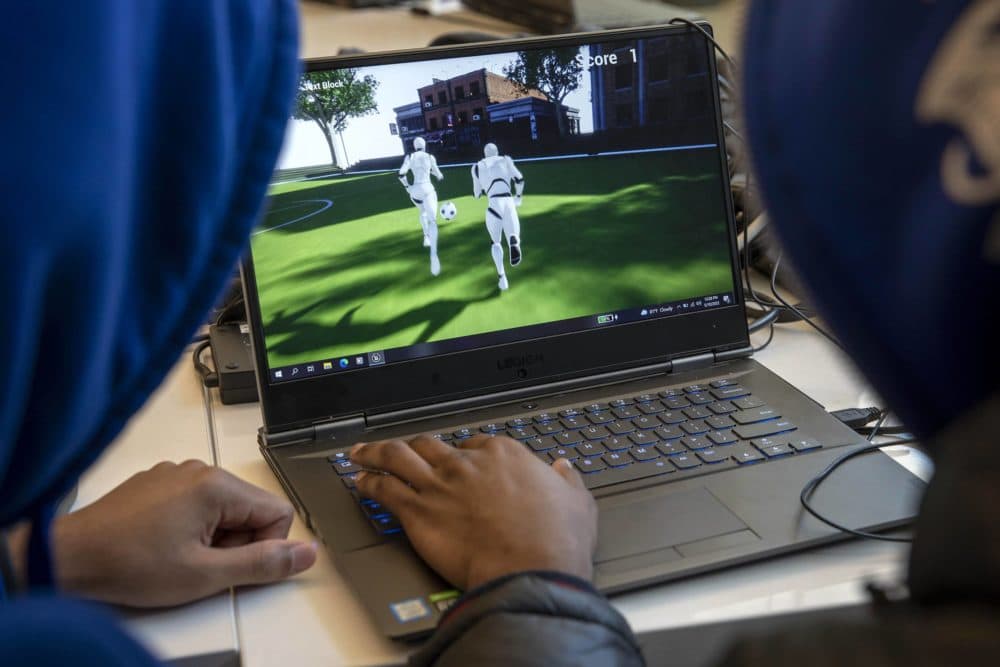The pandemic forced many of us to move into hybrid, technology-mediated teaching, and as we continue our voyage into such spaces, one thing that we in higher ed should remember is that many students have long been quite good at navigating hybrid environments. Really, it’s about time formal education finally catches up.
In his landmark 2003 book What Video Games Have to Teach Us About Learning and Literacy James Paul Gee detailed the ways video games do a better job of facilitating literacy learning than education institutions. Almost 20 years later, his analysis has become incredibly relevant. It would seem that the move toward more hybrid learning environments should have captivated a student demographic primed by video games. But instead, students—many of whom are video-game players—have often hated the virtual learning environments of their universities. Somewhat ironically, the video-game industry is experiencing a resurgence. Prophetically, Gee wrote, “The theories of learning one would infer from looking at schools today comport very poorly with the theory of learning in good video games.”
Now is the perfect time to revisit the principles of why video games are so good at teaching and learning in ways most virtual classes don’t seem to be. Below is a summary of some of those principles.
- Storying content. Gee discussed meaning as being situated in specific contexts. Knowledge, in other words, only becomes meaningful in certain situations. For instance, I might know the nutritional content of eggs, but that doesn’t mean I know how to scramble them or even prepare a nutritious breakfast. In video games, the concepts and skills a player learns have specific uses in particular moments. Those situated meanings require players to recognize the patterns that indicate how to best apply their newly acquired knowledge. Typically, situated meanings are created via stories. Within those stories, players assume an identity that motivates them to make use of whatever the video game is teaching them.
- Applying newly learned skills and knowledge. Video games make frequent use of interest-based interaction with knowledge, promoting self-directed mastery. Very rarely do video games ask players to passively listen to and absorb information—instead, they deliver information in usable chunks. At each stage, players practice applying their new learning, first to familiar situations and progressively to novel situations, facilitating transfer.
- Providing just-in-time feedback. Players typically receive information at the time they need it. Say a player in a particular game is threatened by an oncoming storm. Right at that moment, the game teaches the player how to construct shelter. Other video games might rely on social interactions, often facilitated through popular apps like Discord or GameFAQs. This approach encourages collaboration, allowing players to actively seek information from others when they require it most.
- Encouraging risk. Of course, the consequences of failing in a video game are much lower than failing an expensive college class that could perhaps even influence one’s career. The low-stakes challenges of video games empower players to try new strategies and discover novel approaches to problem solving.
- Rewarding failure. When players take risks and fail, they still learn. On a metacognitive level, players realize a gap in ability or knowledge that might motivate them to persist. On a pragmatic level, they learn not only what doesn’t work but also what might work with modification, the foundation of self-regulation.
These principles remind educators that the virtual wheel does not need to be reinvented. We don’t have to be tech savants to understand what grabs students’ attention and inspires them. We don’t even have to use video games or gamify classrooms. Below are some practical translations of the above principles that can work in our classrooms right now, even without Zoom wizardry.
- Frame content with culturally relevant themes. If meaning is situated in specific contexts, then one way we can engage students is to consider the stories that matter to them. We can do this by activating prior knowledge, such as personal experience, or asking students to share stories of their potential relationships with the course content. For example, an economics professor introducing the topic of monopolies might ask students to consider how they would shop for items if they wanted to boycott Amazon. Good video games invite the players to also shape the story. Zoom can encourage collaborative story shaping (i.e., learning) through hybrid or online groups. The economics professor could set the narrative stage: let’s boycott Amazon. In groups, students could design a plan for only consuming from markets not influenced by Amazon. As they realize the difficulty of effectively doing so, the professor can explicitly illustrate the principles of monopolies.
- Create moments for students to use newly learned skills and knowledge. Active learning has long been a trend, but it isn’t always understood. To be clear, active learning should not replace direct instruction, which, of course, is effective. Certainly, video games have moments when the action pauses and information is directly communicated to the player. But it’s combining the two types of learning together—explicit instruction alongside opportunities for application—that create the strongest learning environments. Experience does not need to be taken literally. Fiction, a simulation of reality, can also be an experience. By broadening the concept of “experience,” virtual environments can expand notions of active learning. For instance, students might role-play imagined experiences. Simulating or role-playing experiences immerse students in the task by motivating them to learn the means to succeed at the task.
- Provide brief checkpoints. Students usually have to complete an entire assignment before receiving any kind of formal feedback. If assignments are broken down into tasks, the way they are in video games’ War and Peace–length epic quests, then instructors can make quick observations of what students are doing, such as through polls. Based on what the instructor sees, they can adapt subsequent class activities. This not only helps educate the students, but it also saves time for the instructor, who then doesn’t have to provide detailed feedback on each student’s final major assignment. Assessment checkpoints can also be social, potentially enhancing student agency. Just as players flock to Discord for help, students could engage each other in some social space. These spaces can be structured—a Padlet with guidelines and examples for students—or open-ended hangouts. Peer review can both save time and be more dynamic in virtual environments.
- Require reflection. When students begin to take social control over assessment, they become more reflective about their own learning. Reflection doesn’t always happen on its own, however. It must be structured as part of the experience. The low-stakes and learn-from-failure approach to video games is one way to encourage such reflection by offering multiple attempts accompanied by instructor or peer feedback. One suggestion for translating that approach to classrooms comes from the Stanford Life Design Lab. In it, students generate hypotheses about newly encountered knowledge, and then they test their hypotheses in the attempt to rethink problems and solutions.
- Stay active. There are many ways to incorporate active discovery, but these strategies must again be guided by explicit instruction about how to reflect on and learn from the risks and failures. The flipped classroom is a good model for pairing explicit instruction with virtual experience. Instructors can deliver much of the direct instruction via video or the college’s LMS. Then students can spend the freed-up time in hybrid breakout groups trying to solve a relevant problem.
Technology itself cannot improve or damage learning. It’s our use of it that matters. There are indeed bad video games, and by bad, I mean games that people did not play. There are also many good ones, and what we need are good course designs so that people want to play and learn from them, too.



![Best Educational Games on Nintendo Switch [2022] | ‘Animal Crossing,’ ‘Pikmin 3 Deluxe,’ and MORE Best Educational Games on Nintendo Switch [2022] | ‘Animal Crossing,’ ‘Pikmin 3 Deluxe,’ and MORE](https://1734811051.rsc.cdn77.org/data/images/full/400269/best-educational-games-on-nintendo-switch-2022-animal-crossing-pikmin-3-deluxe-and-more.jpg)

